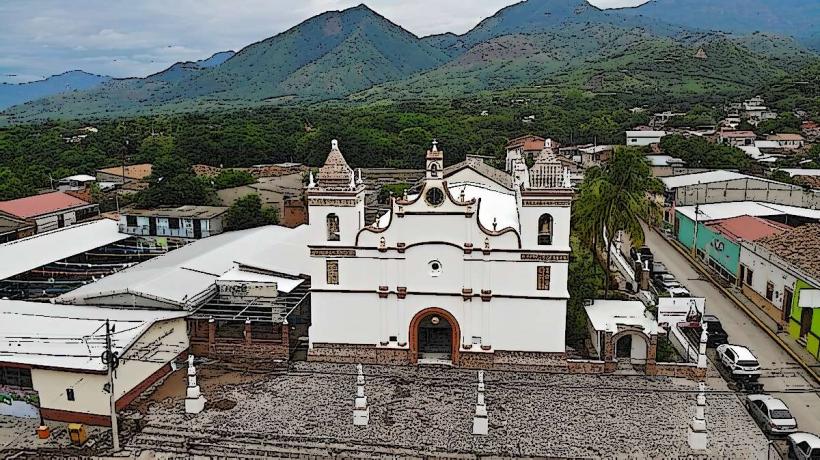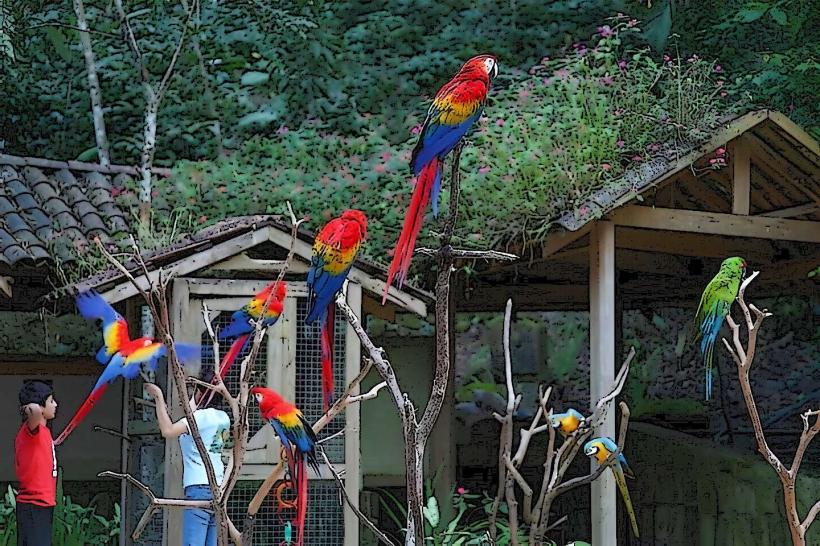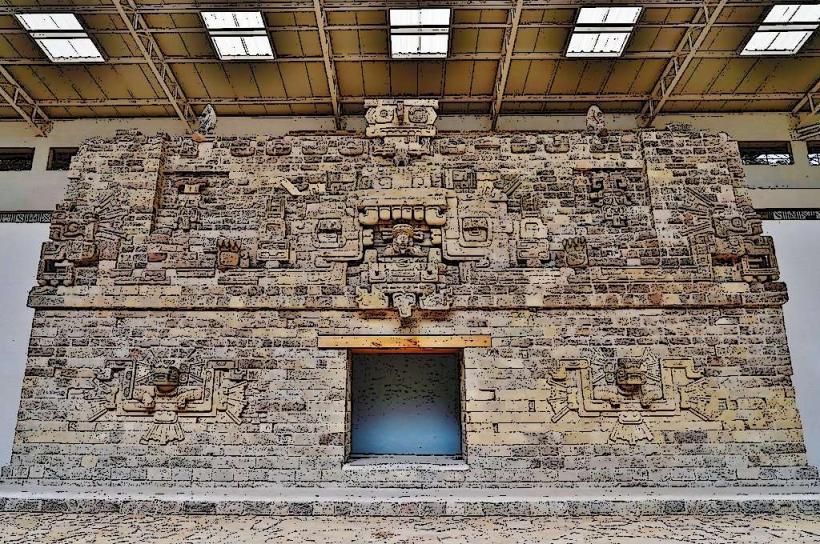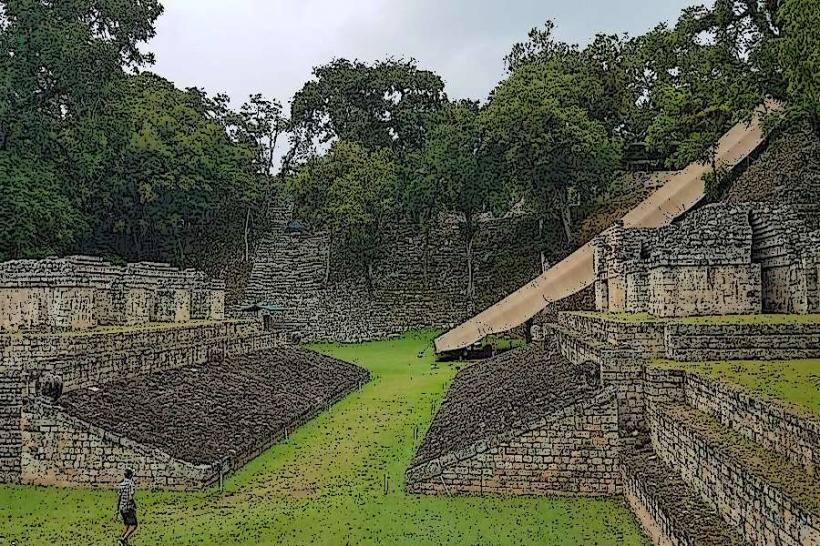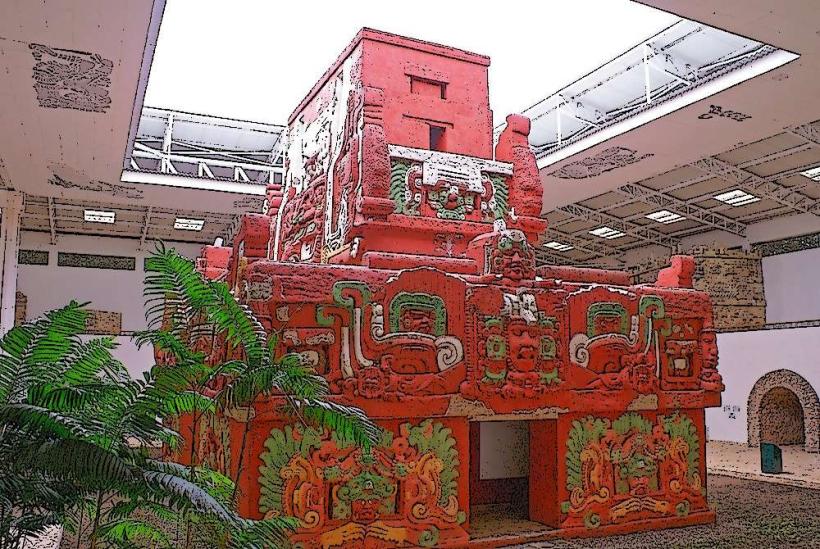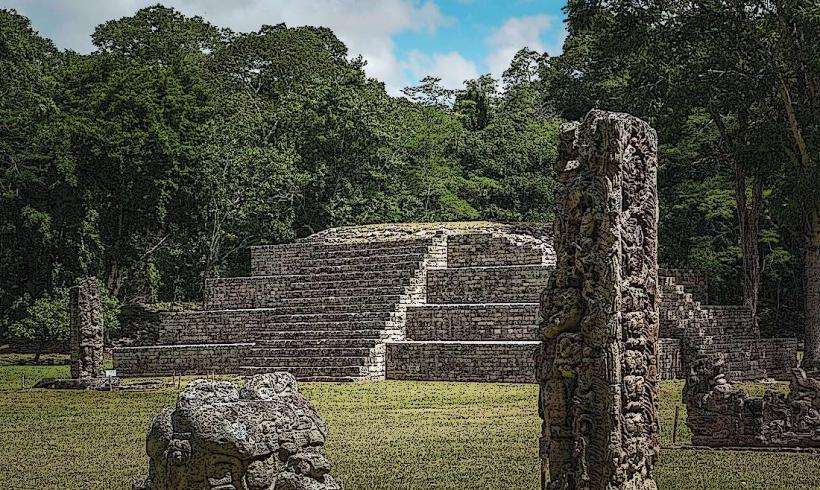Information
Landmark: Copán Archaeological SiteCity: Copa Ruinas
Country: Honduras
Continent: North America
The Copán Archaeological Site is one of the most important and well-preserved Maya ruins in Honduras, located in the Copán Department near the Guatemalan border. It is renowned for its remarkable ancient architecture, sculptures, and its significance as a cultural and political center of the Maya civilization during the Classic period (approximately 5th to 9th centuries AD). Copán was declared a UNESCO World Heritage Site in 1980, recognizing its cultural and historical importance.
Key Features of Copán Archaeological Site
1. Historical and Cultural Significance
- Copán was one of the major city-states of the Maya civilization, particularly known for its role as a political and ceremonial center in the southern Maya lowlands. During its peak, the city was a vital part of the Maya civilization's intricate network of trade, culture, and politics.
- The site served as the capital of the Maya kingdom of Copán, and it flourished for several centuries before it was abandoned around the 10th century AD, likely due to factors such as warfare, drought, and political instability.
2. Stelae and Altars
- Stelae (tall, carved stone monuments) are one of the most striking features of the site. The Maya stelae at Copán are renowned for their intricate carvings, which depict rulers, gods, and important events.
- Altar Q is one of the most famous stelae in Copán. It shows 16 of Copán’s rulers, including the most famous, Ruler 18 Rabbit, who was a key figure in the city’s history.
- The altars are carved from stone and were used for rituals and sacrifices. The sculptures often depict gods, animals, or mythological beings, showcasing the sophistication and artistry of the Maya civilization.
3. The Hieroglyphic Stairway
- One of the most significant features of the Copán site is the Hieroglyphic Stairway. This staircase is the largest known Maya inscription in the world, consisting of more than 1,200 glyphs across 63 steps. These inscriptions are considered one of the most valuable sources of information about Maya politics, culture, and history.
- The glyphs tell the story of Copán’s rulers and their dynastic succession, offering insight into the political and religious life of the city during its heyday.
4. The Acropolis and Plaza
- The Acropolis is the main ceremonial complex at Copán, where important religious and political activities took place. It is a vast area of palaces, temples, and platforms, with several Maya architectural features still intact, such as pyramids and courtyards.
- The Plaza is another significant area where the Maya held large public ceremonies. It is surrounded by several temples and structures, including the Ballcourt, where the Maya played their ritual ball game, often associated with both sport and religion.
5. Copán’s Architecture
- The architecture of Copán is distinct for its elegant and highly detailed carvings, as well as its well-planned urban design. The stairways, pyramids, and temples are decorated with bas-relief sculptures that illustrate the Maya rulers and their connection to the gods.
- The temples at Copán were built with limestone and stucco, which helped preserve much of the detailed artwork that visitors can still observe today.
6. The Museum
- The Copán Archaeological Site is home to an on-site museum where visitors can learn about the history of the site, the excavation process, and the fascinating artifacts that have been discovered. The museum displays a collection of masks, jewelry, pottery, and other Maya artifacts.
- The museum provides important educational context about the site’s history and the broader Maya civilization, making it an essential stop for visitors.
7. The Copán Ruins Today
- The Copán Archaeological Site continues to be an active archaeological site with ongoing excavations. Researchers and archaeologists are continually uncovering new structures, artifacts, and inscriptions, contributing to our understanding of the Maya world.
- The site is a popular destination for tourism, drawing visitors who come to explore the ruins, learn about the ancient Maya, and appreciate the area’s natural beauty.
How to Visit Copán Archaeological Site
- Location: Copán is located in the western part of Honduras, near the Guatemalan border, approximately 190 kilometers from the city of San Pedro Sula and 30 kilometers from the Guatemalan border town of El Ceibo.
- Best Time to Visit: The best time to visit is during the dry season (from November to April), as the weather is more comfortable for exploring the ruins. However, the site is open year-round.
- What to Bring: Comfortable walking shoes, sunscreen, a camera for capturing the ruins and scenery, and water to stay hydrated while exploring.
Why Visit Copán Archaeological Site?
✅ Remarkable ancient Maya architecture and detailed sculptures.
✅ The largest Maya hieroglyphic inscription in the world at the Hieroglyphic Stairway.
✅ An opportunity to learn about the Maya civilization and explore their impressive legacy.
✅ The museum showcasing valuable artifacts and providing further context for the ruins.
✅ A UNESCO World Heritage Site, offering insight into one of the most important cultural centers of the ancient Maya world.
Conclusion
Copán Archaeological Site is a fascinating and significant destination for anyone interested in ancient cultures, particularly the Maya civilization. With its well-preserved ruins, intricate carvings, and impressive monuments, Copán offers a unique opportunity to step back in time and explore one of the greatest archaeological treasures of the Maya world. Whether you are a history enthusiast, a culture lover, or someone seeking to connect with the past, Copán provides a captivating and educational experience.

